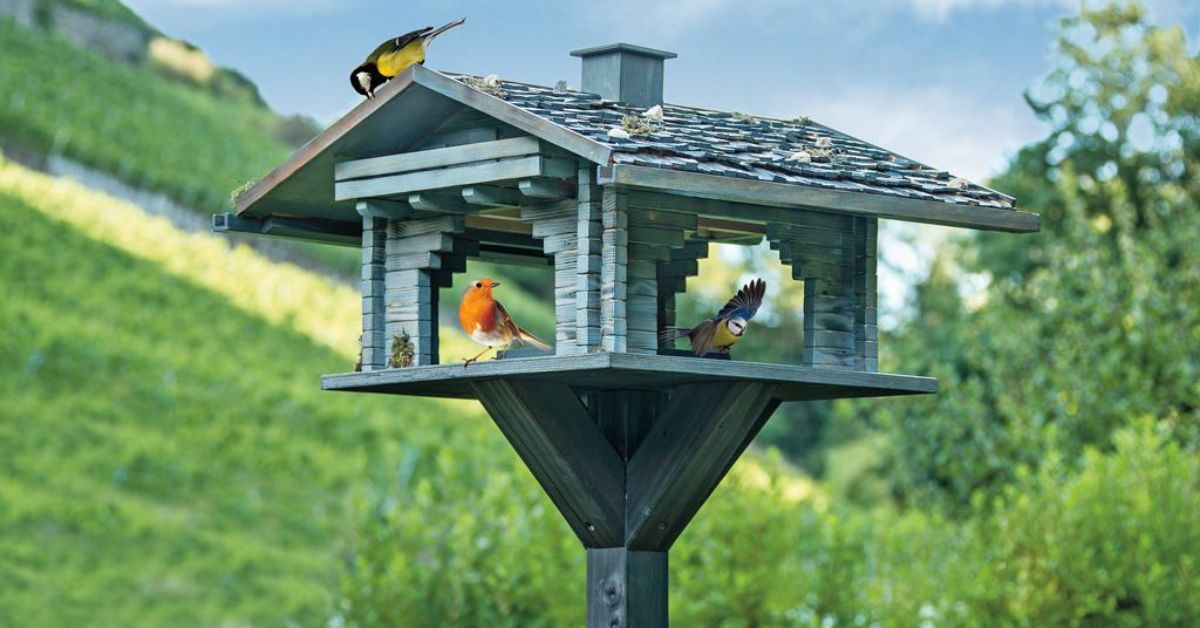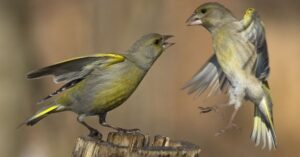As the sun rises and casts golden rays across your garden, a symphony of chirps and tweets fills the air, signaling the arrival of feathered friends eager to take up residence in your backyard. Birdhouses are not only charming additions to any outdoor space but also serve as vital shelters for a variety of avian species.
Yet, with countless designs and styles available, how do you choose the perfect birdhouse tailored to attract specific birds? In this article, we’ll explain an array of birdhouse options that cater to different types of birds—from tiny wrens seeking cozy nooks to majestic bluebirds looking for spacious abodes.
Nest Boxes For Bluebirds
Nest boxes for bluebirds are just one of the many types of birdhouses for different birds that can enhance your backyard ecosystem. Bluebird houses typically have a small entrance hole, around 1.5 inches in diameter, allowing only these beautiful songbirds to enter while deterring larger species.

When considering the diversity of birds you hope to attract, it’s essential to explore various types of bird houses. Owls appreciate taller wooden boxes with deep cavities to roost and nest, while finches prefer cozy nesting cups placed within hanging planters.
Beyond specific designs tailored for each bird species, the material is crucial as well. Cedar or pine woods are popular choices due to their durability and natural resistance to rot. Creating multiple styles of birdhouses—such as open-front designs for robins or gourd-shaped homes for wrens—can cater effectively to an array of avian visitors.
By thoughtfully incorporating diverse types of birdhouses into your garden landscape, you not only provide essential habitats but also witness a vibrant display of wildlife activity throughout the seasons.
Nest Shelf For Robins
To provide shelter for our feathered friends, understanding the different types of bird houses is essential. Each bird species has unique nesting habits and preferences, which means that a one-size-fits-all approach simply won’t do.
From open-fronted designs favored by robins to cavity-nesting styles that attract bluebirds and chickadees, selecting the right type of house is pivotal in supporting local avian populations. A well-constructed nest shelf can make all the difference for robins who prefer to build their nests on sturdy platforms rather than enclosed spaces.
Bird house designs for different species should also take into account factors such as entrance hole size, ventilation, and drainage. For example, while larger songbirds like wrens appreciate houses with wider openings, smaller species require more confined spaces to feel secure.
Incorporating natural materials and colors can help these structures blend seamlessly into the environment, offering both beauty and functionality. By customizing bird houses based on specific needs and behaviors of various birds, we can create welcoming habitats that enhance biodiversity while enjoying the beauty of nature from our backyards.
Bird Houses For Wrens & Chickadees
To attract delightful wrens and chickadees to your garden, choosing the right small birdhouse is crucial. These charming birds prefer specific nesting environments that can be provided by various types of birdhouses designed specifically for them.
For wrens, a cozy small birdhouse with a tiny entrance hole offers protection from larger predators while giving them space to build their intricate nests inside. Chickadees tend to favor slightly larger openings; their ideal homes often feature well-ventilated designs that keep airflow optimal for both parents and chicks.
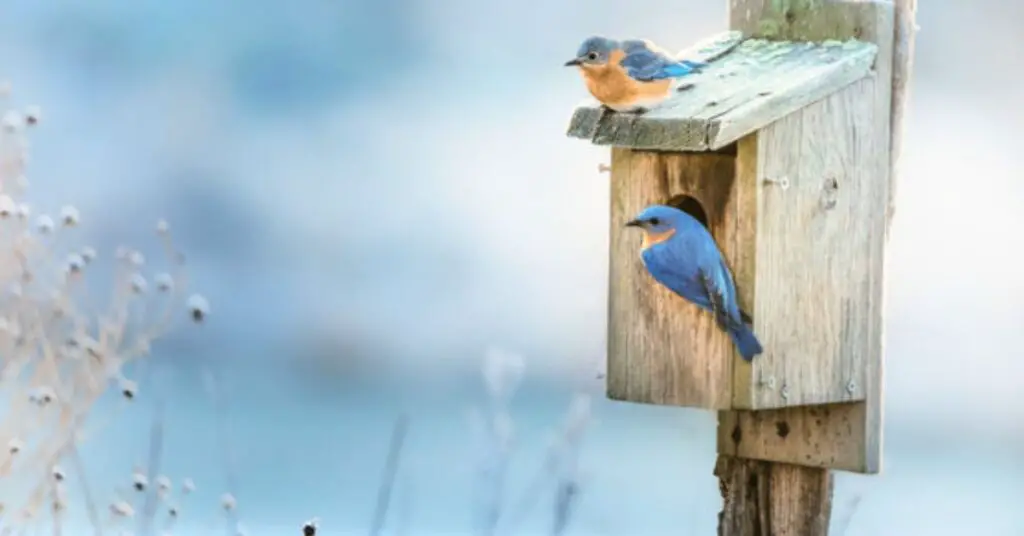
Selecting the appropriate materials is just as important as the structure itself. A small wooden birdhouse finished with non-toxic stains or natural wood will not only blend aesthetically into your yard but also provide insulation against harsh weather conditions.
Look for types of birdhouses that include drainage holes and easy access for cleaning during off-seasons—it’s essential to maintain hygiene in these cozy abodes! By thoughtfully designing or selecting your small birdhouse, you can create an inviting sanctuary for wrens and chickadees alike, fostering a vibrant avian community in your own backyard.
Colonies For Purple Martins
Colonies for Purple Martins are often a vibrant spectacle in any backyard, but it’s essential to observe how these communities interact with other native species, such as the red-winged blackbird female.
Known for their striking plumage and distinctive calls, red-winged blackbirds can be attracted to small bird houses designed specifically for smaller avian inhabitants. While Purple Martins may be the main attraction in a well-planned colony setup, the presence of female red-winged blackbirds adds an intriguing dimension to this competitive ecosystem.
Small bird houses not only provide shelter but also encourage biodiversity by catering to various species’ nesting preferences. When strategically placed near a Purple Martin colony, these tiny homes can serve as an oasis for red-winged blackbird females seeking safe nesting sites away from larger predators and competition.
This interplay enriches the backyard habitat and encourages both bird watchers and nature enthusiasts to appreciate the complex relationships formed in these avian communities. By creating thoughtful environments that welcome multiple species, you foster an engaging experience that celebrates both the resilience of small birds and the beauty they bring into our lives.
Need To Move A Nest? Don’t Do It
When considering the need to move a nest, it’s crucial to remember that many bird species have unique attachments to their homes, making relocation potentially detrimental. Pictures of birdhouses often showcase these cozy abodes nestled within gardens or backyards, but each construction is more than just a charming display; it’s an essential aspect of a bird’s breeding success and territorial integrity.
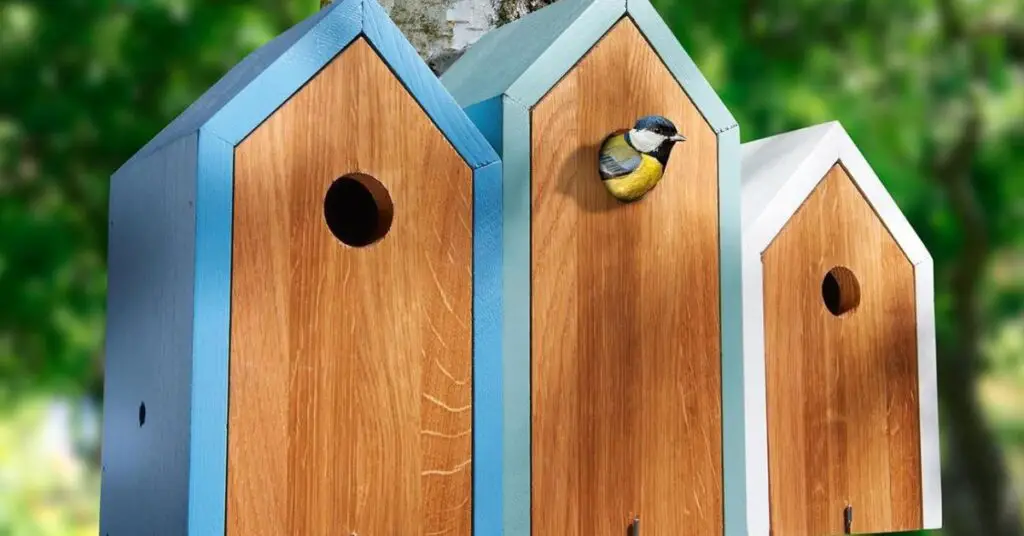
Disturbing a nest can interrupt vital processes like incubating eggs or nurturing fledglings, which could lead to abandonment.
Instead of moving a nest or its corresponding birdhouse, providing natural support is far more beneficial. Enriching the surrounding environment with suitable native plants can attract birds without disrupting their current habitat.
Consider taking pictures of birdhouses in situ as they demonstrate how beautifully integrated these nests are with nature’s ecosystem. Recognizing the significance of these structures allows us to appreciate wildlife diversity while also serving as inspiration for maintaining harmony in your outdoor spaces.
Want To Build Your Own Bird House?
Building your own small bird house is a rewarding project that not only enhances your backyard but also supports local wildlife. When considering bird house designs, it’s essential to choose one that caters to the needs of the birds in your area.
Bluebirds thrive in houses with a 6-inch by 6-inch floor and an entry hole of about 1.5 inches in diameter, while chickadees prefer slightly smaller dimensions.
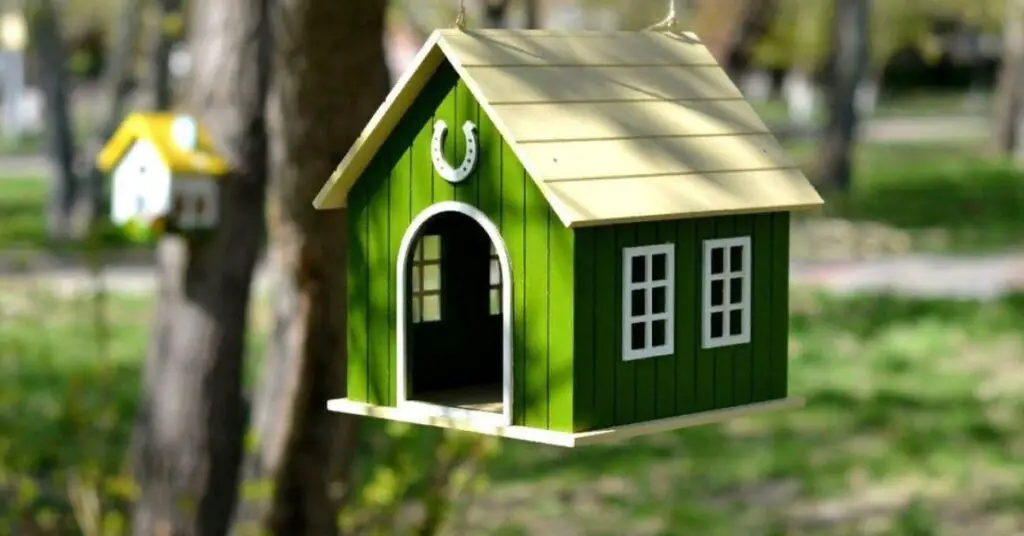
Experimenting with various bird house designs can also include unique features such as built-in ventilation and drainage holes for added comfort. Utilizing natural materials like untreated wood will create a safe environment for your feathered friends while allowing you to embrace eco-friendly practices.
If you enjoyed this post, you might also like another article on our site: “Suet for Birds: Dos and Don’ts for Feeding Success.“
Conclusion
Selecting the right birdhouse is essential for attracting and supporting various bird species in your backyard. Each type of bird has specific needs regarding dimensions, entrance hole size, and nesting materials, making it crucial to do your research before making a purchase.
You choose a charming wooden cottage for wrens or a sturdy metal house for bluebirds, providing a safe and comfortable environment will enhance your chances of avian visitors. By understanding the preferences of different birds, you can create an inviting habitat that fosters both wildlife observation and conservation.
FAQ’s
What Kind Of Bird House Do Birds Like The Best?
When selecting a birdhouse, it’s essential to consider the preferences of the specific bird species you aim to attract, as different birds have varying requirements for nesting. Generally, birds favor houses that mimic their natural habitats.
For example, cavity-nesting birds like chickadees and wrens prefer houses with small entrance holes and adequate interior space for nesting materials. Materials such as untreated wood are ideal since they provide insulation and blend into the environment more naturally than plastic or metal options.
What Color Birdhouse Attracts Birds The Most?
Generally, natural colors that blend in with the surrounding environment tend to be more appealing to birds. Shades of brown, green, and gray mimic the colors found in trees and foliage, making them less conspicuous to predators and more inviting for nesting birds.
These earthy tones help create a sense of safety, encouraging various species to take up residence.
What Is The Best Place For A Bird House?
The best place for a birdhouse largely depends on the species of birds you wish to attract, but there are some general guidelines that can help ensure its success. First and foremost, choose a location that provides safety from predators.
Ideally, the birdhouse should be mounted at least five to ten feet off the ground, away from branches or structures where cats or other predators might leap. Placing it in a quiet area with minimal human disturbance will make it more appealing to nesting birds.
- How To Keep Bees Away From Hummingbird Feeders - March 20, 2025
- How To Attract Owls To Your Yard - March 11, 2025
- Breeding Season For Wild Birds - March 9, 2025
